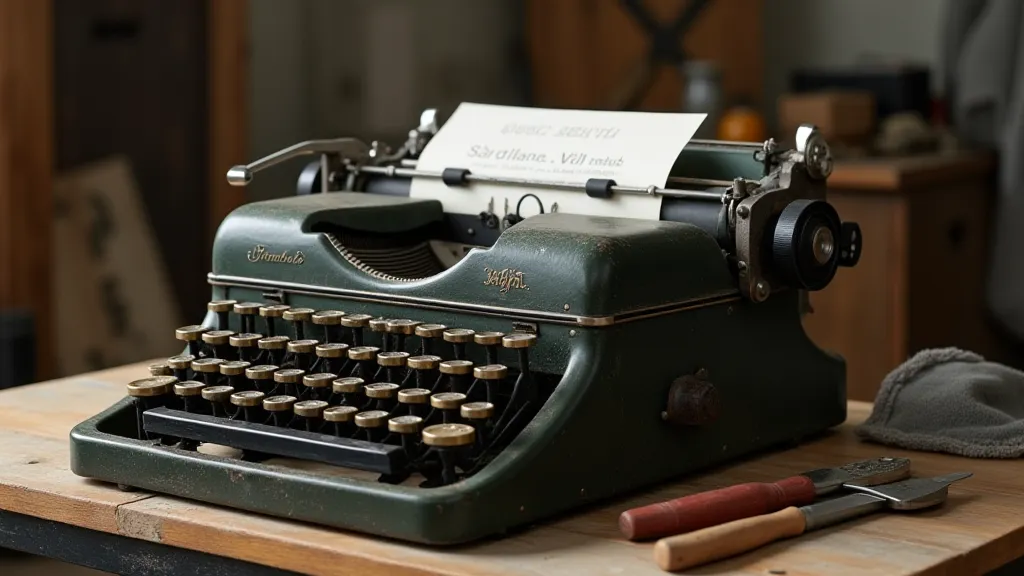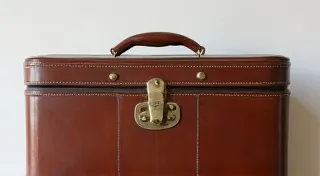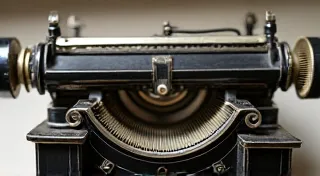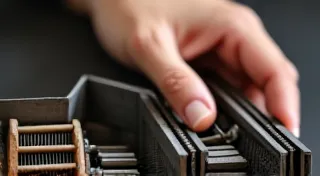Understanding and Adjusting Typewriter Carriage Return
The carriage return mechanism is a crucial element of any vintage typewriter. It's responsible for moving the carriage (the part holding the paper) back to the left margin after each line, preparing it for the next. Understanding how it works and knowing how to adjust it is fundamental to typewriter repair and restoration. This guide will break down the mechanism's components and common problems, offering troubleshooting tips for the home restorer.
The Carriage Return Mechanism – A Breakdown
The carriage return isn't just a simple movement. It's a complex system of levers, springs, and often, a bell or a ratchet. Here's a look at the key components:
- Carriage Rails: These guide the movement of the carriage. A buildup of dirt or dried lubricant can cause friction.
- Carriage Lock: This prevents the carriage from moving accidentally. A faulty lock can be a sign of a worn spring.
- Return Lever: This is the primary lever activated by the carriage return key.
- Ratchet Pawl: This engages with the ratchet wheel to advance the paper one line space at a time.
- Ratchet Wheel: A toothed wheel that determines line spacing.
- Springs: Multiple springs provide the power for the return action and hold the carriage in place. These are often a source of problems.
- Bell (or similar indicator): Many typewriters have a bell that rings when the carriage reaches the end of the line.
Common Carriage Return Problems & Troubleshooting
Let's tackle some common issues you might encounter and how to fix them. Before diving in, remember that identifying the problem can be half the battle. Sometimes, a seemingly complex issue can be traced back to a simple blockage or dried lubricant. Dealing with stuck parts is extremely common, and often addressing that issue is a gateway to fixing several secondary problems.
- Carriage Won't Return: This is often due to a broken or weak spring. Carefully inspect all springs related to the carriage return. A broken spring needs to be replaced. The process of finding and replacing vintage typewriter parts can be daunting, but readily available resources and online communities can offer significant assistance.
- Carriage Returns Too Quickly: Often a sign of a misaligned or damaged return lever. Carefully examine the lever’s pivot points and adjust or replace as needed. This can frequently be associated with issues regarding alignment across the entire machine.
- Carriage Stuck: The carriage rails are likely dirty or have dried lubricant. Cleaning is paramount. Many times, a carriage that appears stuck is simply a product of years of accumulated grime. Clean the rails thoroughly with a solvent suitable for typewriter parts and relubricate. It’s also possible the carriage is stuck due to issues beyond the rails, suggesting a more widespread problem.
- Carriage Return Key Doesn't Engage: This could be a problem with the key itself, the return lever, or the linkage between them. Check for obstructions and ensure the key moves freely. A thorough visual inspection is often sufficient to identify the culprit.
- Line Spacing is Incorrect: This is often related to the ratchet wheel or the pawl. Ensure the ratchet wheel rotates smoothly and the pawl engages properly. Sometimes this can be affected by issues with the key mechanism, and other times it is a more isolated mechanical problem.
Adjusting a typewriter carriage return can be tricky. Here's some advice: it’s essential to approach these tasks with patience and care. Typewriter parts are often delicate and sensitive to forceful manipulation. Remember that even seemingly minor adjustments can significantly impact the overall performance of the machine.
- Gentle Handling: Typewriter parts are often delicate. Avoid forcing anything.
- Cleanliness: A clean workspace and clean parts make troubleshooting much easier.
- Lubrication: Use a typewriter-specific lubricant (not WD-40!) sparingly. Incorrect lubricants can cause more harm than good.
- Observe and Document: Before making any adjustments, carefully observe the mechanism's operation. Take pictures or make notes. This is particularly helpful when dealing with complex machines or when attempting to replicate an original configuration.
- Consult a Repair Manual: If available, a repair manual specific to your typewriter brand is invaluable. These manuals often provide detailed diagrams and step-by-step instructions for various repair procedures.
Specific Brand Considerations
While the basic principles apply to most vintage typewriters, specific brands and models may have unique quirks. Different brands employed different construction methods and design philosophies, resulting in variations in their internal mechanics. For example:
- Remington: Early Remingtons often have a distinctive bell mechanism. The design and complexity of these bells can vary considerably, requiring specialized knowledge for repair.
- Oliver: Oliver typewriters are known for their complex and intricate designs. These intricate designs often mean that a thorough understanding of mechanics is needed to properly maintain them.
- Underwood: Underwoods have a reputation for being robust, but their carriage return mechanisms can be prone to sticking. This reputation for robustness can sometimes mask underlying issues that require attention. If you're experiencing issues with an Underwood, you might want to explore resources dedicated to troubleshooting a sticking typewriter carriage.
Advanced Troubleshooting and Diagnostic Techniques
Beyond the common issues described above, certain problems require a more in-depth understanding of typewriter mechanics. These might include issues with the escapement mechanism (which controls the spacing of characters), the platen roller (which presses the paper against the type), or the ribbon feed system. It’s often useful to disassemble the carriage return mechanism entirely to examine each component individually, paying close attention to the interaction between different parts. Use a magnifying glass and good lighting to identify even the smallest imperfections or signs of wear.
Resources for Further Learning
There’s a wealth of information available for those interested in learning more about vintage typewriter repair. Numerous online forums and communities offer support and advice from experienced restorers. These communities are invaluable for troubleshooting specific problems and sharing best practices. Furthermore, dedicated websites and YouTube channels provide detailed tutorials and demonstrations of various repair techniques. Remember, every typewriter is unique, and experience is the best teacher.
Conclusion
Restoring a vintage typewriter's carriage return requires patience, attention to detail, and a basic understanding of mechanics. By following these guidelines and researching your specific model, you can bring a piece of history back to life and enjoy the satisfying click-clack of a restored typewriter. Don’t be afraid to experiment and learn from your mistakes—even experienced restorers encounter unexpected challenges. The journey of restoring a vintage typewriter is a rewarding experience that connects you to a rich tradition of craftsmanship and ingenuity.






